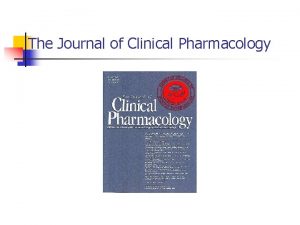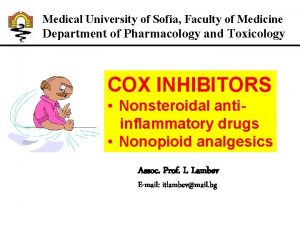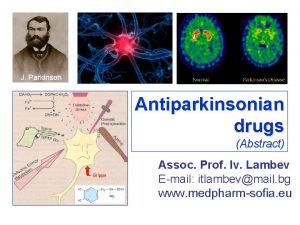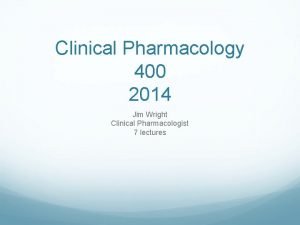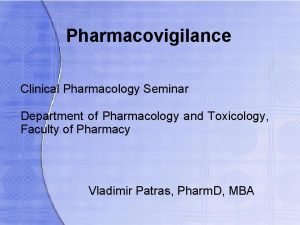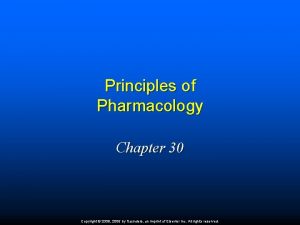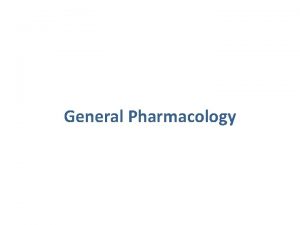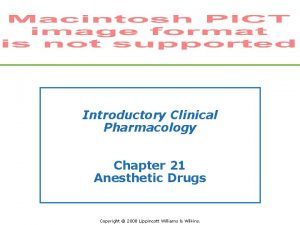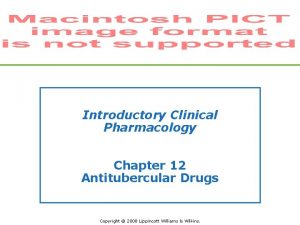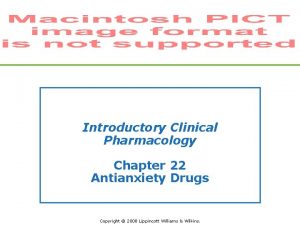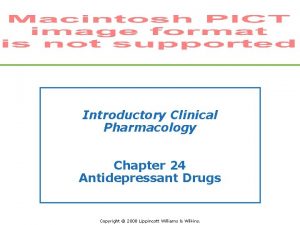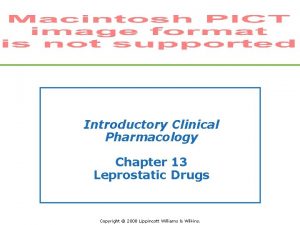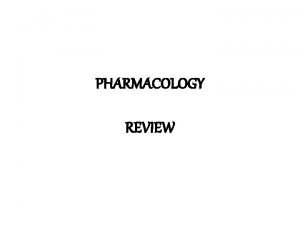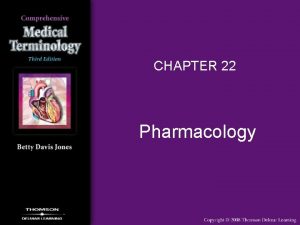Introductory Clinical Pharmacology Chapter 14 Antiviral Drugs Copyright












- Slides: 12

Introductory Clinical Pharmacology Chapter 14 Antiviral Drugs Copyright © 2008 Lippincott Williams & Wilkins.

Antivirals: Actions • Combat viral infections • Interfere with the virus’s ability to reproduce in a cell • Examples of Viral Infections: – West Nile, Hepatitis C, Most Respiratory Infxs, Common Colds, Influenza, HIV, Herpes Simplex 1 and 2 (genital) and Herpes Zoster Copyright © 2008 Lippincott Williams & Wilkins.

Medications to Recognize • Antiviral – acyclovir (Zovirax) – amantadine (Symmetrel) – valacyclovir (Valtrex) – Abreva topical • Anti-retroviral (HIV Treatment) – Sustiva – Epivir – zidovudine (AZT) / (Retrovir) – Combivir Copyright © 2008 Lippincott Williams & Wilkins.

Antivirals: Adverse Reactions • Gastrointestinal reactions – Nausea and/or vomiting; diarrhea • Other reactions – Headache; rash; fever; insomnia Copyright © 2008 Lippincott Williams & Wilkins.

Antivirals: Contraindications and Precautions • Use during pregnancy and lactation only when the benefit outweighs the risk to the fetus or child Copyright © 2008 Lippincott Williams & Wilkins.

Antiretrovirals: Actions • Retroviruses: Highly active antiretroviral therapy (HAART); combination of drugs: – Protease inhibitors – Reverse transcriptase inhibitors – Attachment and fusion inhibitors Copyright © 2008 Lippincott Williams & Wilkins.

Antiretrovirals: Uses and Adverse Reactions • Used in the treatment of HIV and AIDS • Adverse reactions – Gastrointestinal reactions: Nausea, vomiting; diarrhea; altered taste • Other reactions: Headache; fever; chills; rash; numbness and tingling in the circumoral area (around the mouth) or peripherally or both Copyright © 2008 Lippincott Williams & Wilkins.

Nursing Process: Assessment • Preadministration assessment – Determine the patient’s general state of health and resistance to infection – Record vital signs, symptoms, and complaints – Additional assessments may be necessary in certain types of viral infections Copyright © 2008 Lippincott Williams & Wilkins.

Nursing Process: Assessment (cont’d) • Ongoing assessment – Monitor for and report any adverse reactions from the antiviral drug – Inspects the IV site several times a day for redness, inflammation, or pain and report any signs of phlebitis Copyright © 2008 Lippincott Williams & Wilkins.

Nursing Process: Implementation • Educating the patient and family – Explain the dosage regimen and advise to take the drug as prescribed only – Educate the patient of potential adverse reactions and explain the necessity of contacting the primary health care provider immediately if symptoms or adverse reactions occur Copyright © 2008 Lippincott Williams & Wilkins.

Nursing Process: Evaluation • The therapeutic effect is achieved; symptoms of the disease process subside or diminish • Adverse reactions are identified, reported, and managed • Patient and family demonstrate understanding of the drug regimen • Patient verbalizes the importance of complying with the prescribed therapeutic regimen Copyright © 2008 Lippincott Williams & Wilkins.

End of Presentation Copyright © 2008 Lippincott Williams & Wilkins.
 Second antiviral pill
Second antiviral pill Antiviral ajan
Antiviral ajan Pharmacology of drugs acting on respiratory system
Pharmacology of drugs acting on respiratory system Adrenal drugs pharmacology
Adrenal drugs pharmacology Clinical pharmacology powered by clinicalkey
Clinical pharmacology powered by clinicalkey Clinical pharmacology
Clinical pharmacology Basic & clinical pharmacology
Basic & clinical pharmacology Dopamine synthesis
Dopamine synthesis Analglesia
Analglesia Clinical pharmacology residency
Clinical pharmacology residency Clinical pharmacology seminar
Clinical pharmacology seminar Spremicides
Spremicides Chapter 30 principles of pharmacology
Chapter 30 principles of pharmacology





